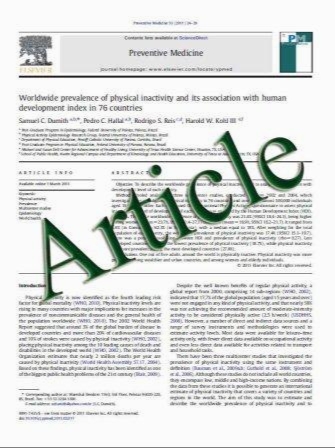Effects of APOA5 S19W polymorphism on growth, insulin sensitivity and lipoproteins in normoweight neonates
- نوع فایل : کتاب
- زبان : انگلیسی
- مؤلف : Eva Gesteiro & Sara Bastida & Miguel Vلzquez-Velasco & Dolores Corella &Marisa Guillén & Jose M. Ordovas & Francisco J. Sلnchez-Muniz
- چاپ و سال / کشور: 2011
Description
Apolipoprotein (Apo) A5 is a protein involved in the activation of lipoprotein lipase (LPL) and the metabolism of triglyceride (TG)-rich lipoproteins. LPL plays a major role in the metabolism of TG-rich lipoproteins, and placental LPL activity is known to correlate positively with foetal fat deposition and size. We examine the association between the common APOA5 S19W polymorphism and neonatal anthropometrical measurements, lipoprotein and hormone concentrations, and insulin sensitivity in 58 normal weight Caucasian newborns from the Mérida cohort. Neonates with the W allele displayed lower BMI (P<0.001), ponderal index (P<0.001), birth weight (P< 0.01), insulin levels (P<0.05), the insulin/cortisol ratio (P< 0.05), HOMA-R (P<0.05) and Apo B values (P<0.01), but higher oxidised LDL (LDLox) values and a higher LDLox/ low-density lipoprotein (LDL) ratio (both P<0.05) than Shomozygous newborns. The APOA5 S19W polymorphism was associated with foetal growth as well as with glucose and lipoprotein metabolism in the neonates. Concurrence of the S19W polymorphism in neonates and their mothers did not affect neonatal lipid and lipoprotein concentrations but was associated with impaired foetal growth. Specifically, W allele carriers displayed a higher degree of LDL oxidation and lower body weight, plasma insulin values, insulin/ cortisol ratio and Apo B concentrations than homozygotes for the common S allele. In conclusion, these findings suggest that the W allele carriers received a less optimal nutrition during gestation and that their lipoprotein antioxidant status was inferior to that of their homozygous S allele counterparts.
Eur J Pediatr DOI 10.1007/s00431-011-1473-y Received: 14 December 2010 / Accepted: 4 April 2011


